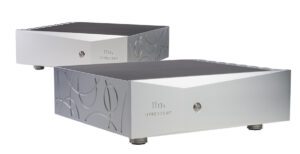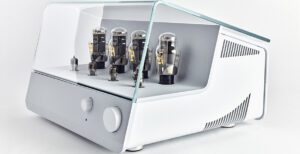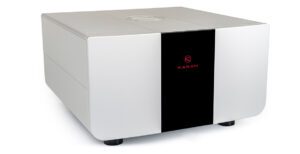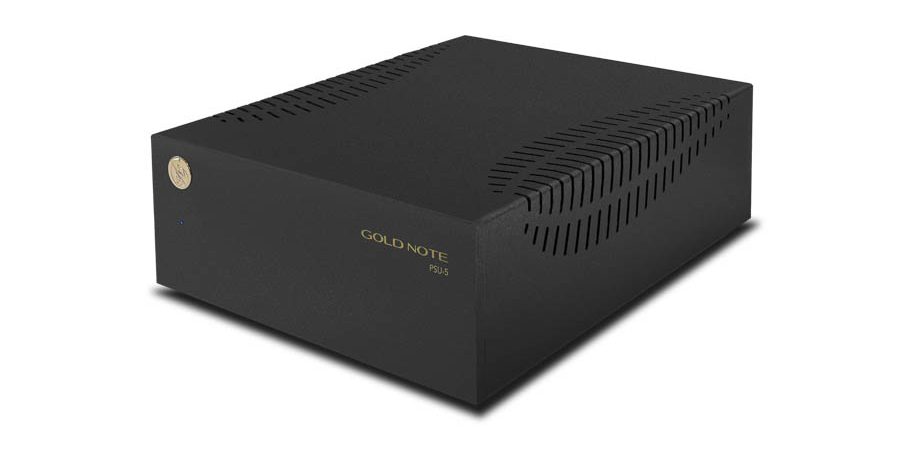
Last year, I got to review the Gold Note PH-5 phono stage. At that time the matching Power Supply Unit had not been released. A couple of months after that review was published, Gold Note contacted me and asked if I would like to hear the PH-5 with its own dedicated power supply (the PSU-5), as that was now available. Silly question – of course I was interested! A unit was then sent to me by the nice people at Airt Audio, Gold Note’s UK distributor, and – spoiler alert – another period of unbridled vinyl joy began.
Brief tour
In case you missed it the first time around, let me take you on a brief tour of both units. The PH-5 differs from its more expensive sibling in a couple of visible ways. As already mentioned, the rotary dial of the PH-10 has gone, leaving just a colour touchscreen on the front, along with a small LED which indicates whether the unit is in standby mode or fully operational. Above that sits a small embossed gold disc showing the Gold Note loge. On the top right, again in gold, are the manufacturer’s name in upper case and the model name below that in a small size of the same font.
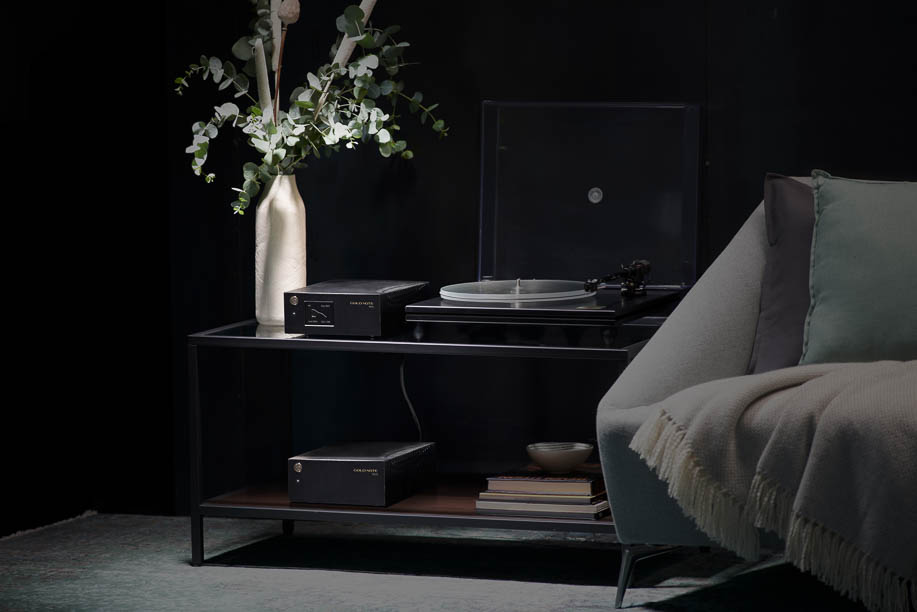
Around the back, the main visible difference is that there is only a single input position, as opposed to the two on the PH-10. The balanced XLR outputs have been retained along with a pair of RCAs. All the sockets are gold, as is the ground pin for the turntable input. In other words, Gold Note has maintained its high class build quality even on this “entry-level” device. There is an IEC power socket and an on/off rocker switch.
The PSU-5 is a perfect visual match for the phono stage, as one would expect, but without the colour screen. On the rear is the multi-pin socket for the supplied umbilical cord, an earthing pin and again an IEC input socket and rocker switch.
Inside the PSU is a two-transformer circuit, with plenty of clean power being made available to the main unit. This configuration helps to reduce noise from the AC. However, the Gold Note designers have not stopped there. A dual-choke inductive filter developed with a dedicated transformer completely shields the PH-5 from unwanted noise. The design goal was to improve dynamics and fine detail compared with running the PH-5 with its own internal power supply.
When the PSU-5 arrived my system had a few changes from the one that had supported my review of the PH-5. I was playing host to a pair of Dynaudio Contour 20i stand-mount loudspeakers (reviewed in the January 2024 edition of hifi+) and a Kleio K135 integrated amplifier. They were connected with Audioquest Robin Hood cables. My Linn Sondek, with hardware upgrades from Tangerine Audio and a Dynavector XX2 moving coil cartridge installed in the Ittok arm was unchanged from the previous review. I plugged the arm leads from the LP12 into the PH-5, along with the grounding cable to its stud, and used a pair of Audioquest Pegasus XLR cables between the PH-5 and the K135.
Listening to the PH-5/PSU-5
I gave the PSU-5 a day or two to settle in, as it was a factory-fresh unit. I cued up another of my firm favourite albums for review purposes and one which featured in the PH-5 review, Gary Karr’s recording of Rodrigo’s En Aranjuez Con Tu Amor on the Firebird/Cisco pressing (CLP7058). Once again I was lost in the recital, the rich tones of Mr Karr’s double bass both sweet and deep. The sound was just a tiny bit harder than I remembered it, but I put this down to the newness of the PSU. For the next two days I played vinyl almost without pause from about 9 in the morning until Mrs K returned from her proper job at about 5. It all sounded fine as I went about my other tasks, as I did not want to rush to judgement while the PSU-5 was still settling in.
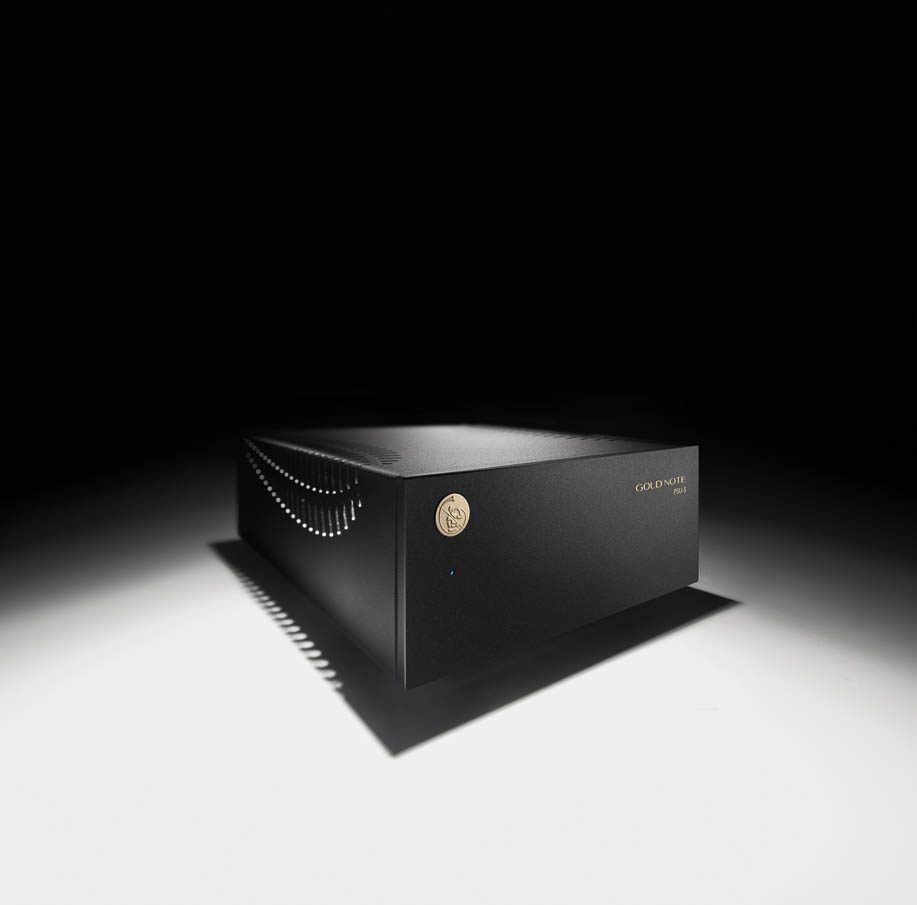
On the third day (without wishing to sound unduly biblical) I thought the system should be ready for some more serious listening. Although it was a bit of extra work I played one side of an album without the PSU involved and then plugged it back in and repeated the side. First up was my original copy of Fleetwood Mac’s Rumours, which the still present sticker tells me cost $4.88 at the Wherehouse record store on Wilshire Boulevard in Los Angles when I was there in the summer of 1977. It is in remarkably good condition considering its age. The bare PH-5 gave a very good account of the music. Every song came across very well. I then plugged in the PSU-5 and repeated the exercise. Oh… my… giddy… aunt! (I suspect my words at the time were slightly more profane). ‘The Chain’ had me up on my feet, in full air bass guitar mode. It went from very good to compelling. Nothing was held back – the band were going for broke. By the time we got to the final track ‘Gold Dust Woman’, Stevie Nicks’ ethereal voice was as delicate as those floaty clothes she used to wear in the band’s heyday.
Returning to the Gary Karr album (which is never a hardship), I played it with the now definitely warmed up PSU. This time that slight hardness which I had detected had vanished completely. The music simply flowed through the maestro’s hand. My earlier reservations were washed away in a tsunami of exquisite music-making.
Still on something of a high from that musical rush, I selected another album from further back in my youth. In the mid to late 1960s my father, who was an army chaplain, was stationed in what was then West Berlin. One of the privileges that his rank afforded was access to the American PX in their sector of that fine city. My parents took me there and let me browse in the admirably extensive record section of this department store for GIs. On one visit I was treated to a Rolling Stones album called Now, which was a US only issue at the time.
The rear of the sleeve states at the bottom that it was electronically reprocessed for stereo from the original monaural recoding. No matter, I cued up the first side and sat down to listen to the Stones tearing into ‘Everybody Needs Somebody To Love’. The same thing happened. The bare PH-5 had my feet tapping and my head nodding but when I added the PSU-5 I was up and – let’s not call what went on dancing – but there was definitely rhythmic body movement and I may even have joined in the chorus. By the time I had cranked up the volume and track three was roaring from the Dynaudios the irony of a man my age sing-shouting ‘You Can’t Catch Me’ was probably beyond parody. No matter. The extra volume and the sense of being at the front of the stage at a Stones 60s gig combined got me lost in the moment. It’s at times like this that I am glad to live in a detached house and to be home alone during daylight hours.
From then on I dispensed with the with/without PSU part of the reviewing process – it is just so clearly better with the PSU-5. Everything I wrote about the PH-5 in my original review held true, but now it was doing it with the more appropriate PSU-5 which costs roughly third of the price of the PSU-10 I used earlier in the year. As before, this system was agnostic when it came to music genres. It brought everything I played through it to life.
Towards the end of the review period, both the Kleios K135 amplifier and the Dynaudio had to be returned whence they came. The replacements, however, were more than adequate and actually belonged to me, so this was never likely to downgrade the sound. Change it, yes but downgrade it, no. The Lyngdorf TDAI3400 took over amplifier duties and the Harbeth Compact7ESRDXs and their stands were set back in their familiar positions. The XLR cables were connected to the upgraded analogue input board installed in the TDAI3400.
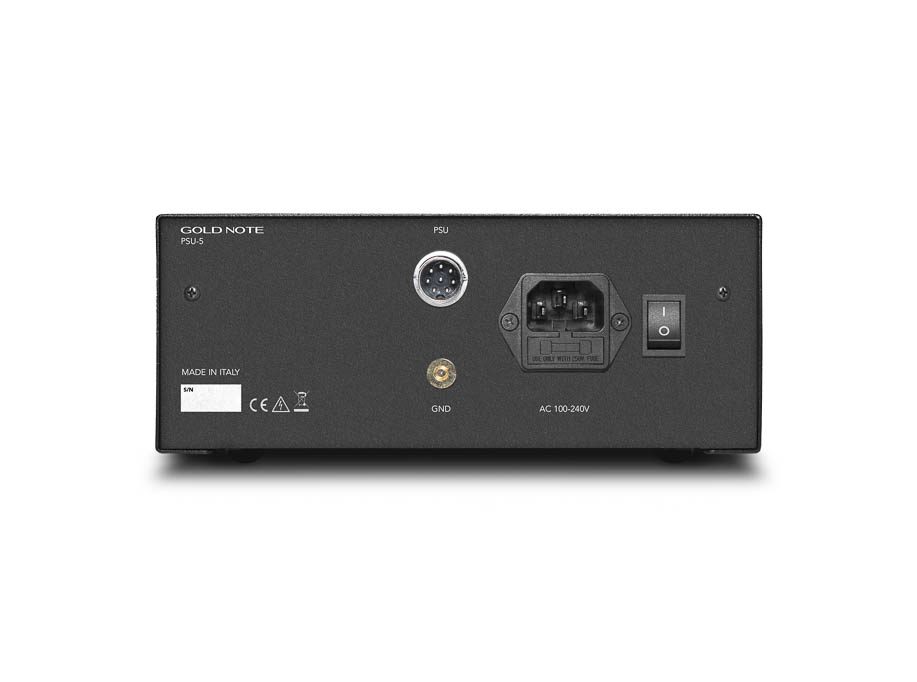
In fairness to the Gold Note units I gave the Lyngdorf and the Harbeths a couple of days to warm up and started back on the pile of records still awaiting play. First up on the LP12 was the new half-speed master version of what many regard as the pinnacle of the Who’s recorded output, Who’s Next. Originally released in 1971, this 2023 edition was mastered by long-time Who associate Jon Astley at Close To The Edge, while the half-speed masters were cut by Miles Showell at Abbey Road Studios. This is an album I have loved – revered even – since its release. I know it well, or at least I thought I did. This was my first play of this 2023 release, and from the first notes from the synthesiser on ‘Baba O’Reilly’, it was as if it had been recorded yesterday and gone from monochrome to vivid colour. By the time ‘Won’t Get Fooled Again’ faded to silence I sat for an indeterminate period of time, quietly stunned. Eventually I did get up and lift the arm out of the run-out groove, but I decided that nothing could top that experience so called it a day as far as music listening was concerned.
The Final Verdict
I have re-read my conclusion to the original review of the PH-5 and stand by every word I wrote then. The PH-5 is the finest sub £1,000 phono stage to have passed through my system in all the time I have been a reviewer. It is very well built, easy to use, incredibly versatile and sounds magnificent. If you then add the PSU-5 into the mix you have an admirably accomplished sub-£1.500 phono stage which will get as much out of your precious vinyl as the rest of your replay system will allow. If you care enough about vinyl replay to contemplate investing £1.500 in a phono-stage, you really have to include these two elegant boxes in any audition shortlist that you are drawing up. I would describe my own system as a solid mid-range performer, capable of giving me moments of pure pleasure.
A friend of mine in high-end audio retail has recently sold a pair of speakers for three times the market value of my home, and I am happy for the purchaser, for he can surely afford the best of the best. For those of us with more modest sums at our disposal, audio purchases are not usually undertaken lightly, and we want to be as sure as we can be that the components we choose will serve us well for years to come. The Gold Note PH-5 and its dedicated PSU are undoubtedly such components. I gave myself no room for hyperbole when I gave the PH-5 my highest recommendation, so I can only repeat that for the two-box package reviewed here. My warmest congratulations to Gold Note, for producing such sonic excellence in such an affordable guise. It is good to know that the Florence of the 21st century can produce its own masterpieces and need not feel overshadowed by its illustrious past.
Technical specifications
- Type: Power supply for Gold Note PH-5 phono stage
- Power supply: Three rail, audio grade, with three ultra-low voltage regulators
- Dynamic power: >50W
- Output voltage max variation: 0.05%
- Line Noise Rejection: >80dB
- Common Mode Noise Rejection: >80dB
- Full-power response time: <2.5s
- Dimensions (W×H×D): 20 × 8 × 26cm
- Weight: 2kg
- Price: £599, $999
Manufacturer
Gold Note
Gold Note PH-5 Phono Stage: https://www.goldnote.it/phono-stages/ph-5/
Gold Note PSU-5 power supply for PH-5: https://www.goldnote.it/power-supplies/psu-5/
UK distributor
Airt Audio
+44(0)7548 796382
Tags: GOLD NOTE PSU-5 POWER SUPPLY
By Chris Kelly
More articles from this authorRead Next From Review
See all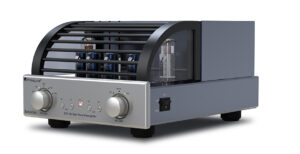
PrimaLuna EVO 100 phono preamplifier
- Apr 22, 2024
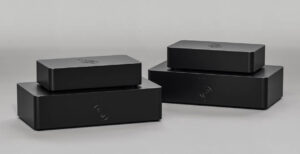
Reiki Audio SuperSwitch Master Pro + Servant Pro
- Mar 27, 2024
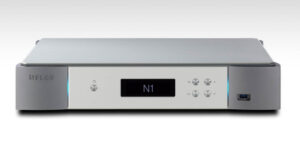
Melco Audio N1-S38 music server
- Mar 27, 2024








